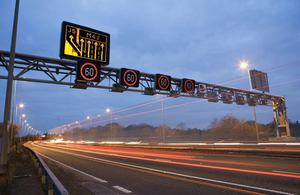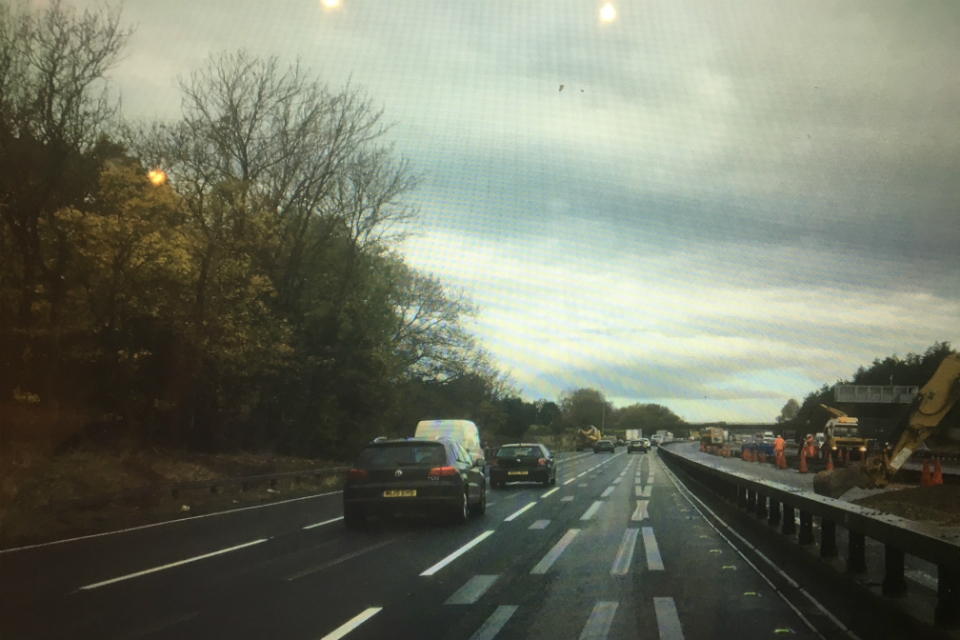Government issues rallying call to action for historic counties celebrations
Government publishes new guidance to help local authorities recognise historic counties as a way to boost community pride.
Published 16 July 2019 From: Ministry of Housing, Communities & Local Government and Jake Berry MP

From the bear and ragged staff of Warwickshire to the golden knot of Staffordshire, a renaissance of historic county flags is well underway as the government publishes guidance to help councils celebrate the rich heritage and culture of their counties.
The new guidance helps local authorities recognise historic counties as a way to boost community pride and provide opportunities for families to learn about local traditions.
It includes consideration of placing road signs to mark the boundaries of the historic counties, flying county flags whenever possible, designing flags for counties without one and celebrating county days.
The government recently confirmed that 50 registered flags of the historic counties of Great Britain will fly alongside the Union flag in the heart of Parliament Square in support of a colourful celebration of the nation’s history and culture on 23 July – Historic County Flags Day.
Northern Powerhouse Minister, Jake Berry MP, who champions the historic counties campaign in government, has this week written to the leaders of all county councils encouraging them to celebrate their historic county’s heritage and proudly fly the flag for their counties on 23 July.
Minister for the Northern Powerhouse and Local Growth, Jake Berry MP, said:
Our new guidance helps local authorities celebrate historic counties, their shared heritage, culture, history and our great nation.
In government, we are throwing our full weight behind historic counties through proudly flying 50 iconic county flags in the heart of Parliament Square for Historic County Flags Day on 23 July.
I am delighted that this campaign has won support from the County Councils Network and I look forward to seeing the celebrations local authorities across the country have planned to promote historic counties in their communities.
A number of county councils have also thrown their full support behind the historic counties campaign, including Hampshire who have recently created their own emblematic, eye-catching flag. Staffordshire has meanwhile held its own Staffordshire Day celebrations earlier this year which included a ‘Made in Staffordshire’ theme to promote the historic ceramic and brewing heritage of the county.
The campaign has also attracted support from the County Councils Network who hosted Minister Berry earlier in the year to discuss how central government and local government can do more to promote historic counties at both the national and grass-roots levels.
Councillor Martin Hill, County Councils Network devolution spokesman, said:
County councils are an integral part of England’s history and they continue to be part of people’s local identity. The historic nature of counties forms a key part CCN member councils’ work to promote their areas as great places to visit, live and work.
The County Councils Network welcomes the government promoting the significance of counties, both economically and socially.
At the same time, it is important that this guidance recognises the importance of existing county boundaries in enabling county councils to deliver efficient local services, such as transport and highways, and economic growth.
County councils should retain local discretion over how they use their history and identity to ensure that their 26 million residents remain clear about who is providing the services they use each day.
Historic County Flags Day is Tuesday 23 July 2019, when the people of Great Britain celebrate the nation’s historic counties through the flying of flags.
The government attaches great importance to the history and traditions of this country. Our history helps to define who we are and where we come from, and we are stronger as a nation when we cherish and champion our local traditions. Understanding the past and how we have developed helps us to face the future with confidence and as a shared experience.
In 2012 the government changed Whitehall rules to allow local and county flags to be flown without planning permission, in 2014 planning guidance was issued allowing councils to put up traditional counties boundary signs and the Traffic Signs Regulations and General Directions 2016 allows the signing of historic county boundaries.
County councils and unitary counties have been encouraged to come forward with innovative ideas to bring local communities together around the history and heritage of their areas.
The Ministry of Housing, Communities and Local Government has committed to exploring further work with a range of partners to raise the profile and maximise the impact of celebrating historic counties in the long-term.
Read the guidance issued to councils.
Office address and general enquiries
2 Marsham Street
London
SW1P 4DF
Contact form https://forms.communit…
General enquiries: please use this number if you are a member of the public 030 3444 0000
Media enquiries
Email newsdesk@communities.gov.uk
Please use this number if you are a journalist wishing to speak to Press Office 0303 444 1209
Social media – MHCLG
Twitter – https://twitter.com/mhclg
Flickr – http://www.flickr.com/photos/mhclg
LinkedIn – http://www.linkedin.com/company/mhclg


